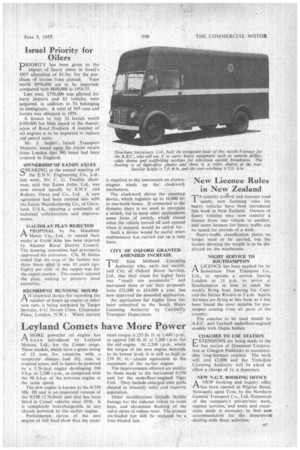Leyland Comets have More Power
Page 39

If you've noticed an error in this article please click here to report it so we can fix it.
A MORE powerful oil engine has
been introduced by Leyland Motors, Ltd., for the Comet range. These models, which have a' gross rating of 12 tons for countries with a temperate climate and iO4 tons in tropical zones, will in future be powered by a 5.76-litre engine developing 100 b.h.p. at 2200 r.p.m., as compared with the 90 b.h.p. of the previous engine at the same speed.
The new engine is known as the 0)350 Mk. III and is an improved version of the 0/350 (5.76-litre) unit that has been fitted in Cornet vehicles since 1950. It is completely interchangeable in any chassis powered by the earlier engine.
Performance curves of the new engine at full load show that the maxi mum torque is 255 lb. ft. at 1,400 r.p.m:, as against 240 lb. ft. at 1,200 r.p.m. for the old engine. At 2.200 r.p.m., where the torque of the new engine descends to its lowest level, it is still as high as 239 lb. ft.—almost equivalent to the maximum of the earlier engine.
The improvements effected are similar to those made to the horizontal 0/350 unit for the underfloor-engined Tiger Cub. They include enlarged inlet ports shaped to intensify swirl and improve aspiration.
Other modifications include Stellite facings for the exhaust valves to resist heat, and chromium flashing of the valve stems to reduce wear. The present six-bladed fan will be replaced by a four-bladed fan.




































































































